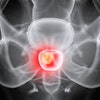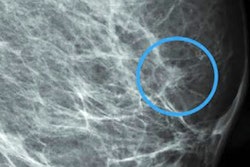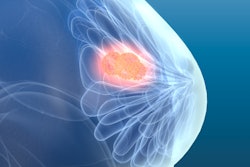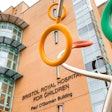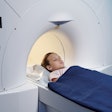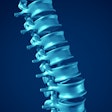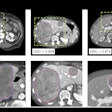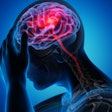
Artificial intelligence (AI) has drawn significant interest lately for its potential to increase the efficiency and effectiveness of breast cancer screening programs. Researchers from Sweden are putting that idea to the test in a large randomized prospective trial that will enroll 100,000 women.
 Dr. Kristina Lång, PhD, of Lund University.
Dr. Kristina Lång, PhD, of Lund University.Launched on 12 April at Lund University and the Unilabs Mammography Unit at Skåne University Hospital, the Mammography Screening with AI (MASAI) trial will compare AI-integrated screening mammography interpretations with the standard of care -- double reading by radiologists without AI, according to principal investigator Dr. Kristina Lång, PhD, an associate professor of radiology at Lund University.
"The purpose of the MASAI trial is to assess whether AI can improve the efficacy of mammography screening by adapting single and double reading based on AI-derived cancer-risk scores and to use AI as a detection support in the screen reading," she told AuntMinnieEurope.com. "We hypothesize that the interval-cancer and false-positive rates will be reduced with AI-integrated mammography screening, along with a considerable reduction in the screen-reading workload."
Retrospective studies have shown that AI can produce a similar level of accuracy to breast radiologists in reading mammograms. As a result, AI shows great promise in improving the efficiency of screening programs, according to Lång.
AI could potentially mitigate several challenges with mammography screening, including cancers that are missed during screening and appear as interval cancers. These cancers can have poor prognosis and would benefit from earlier detection, she said.
In an earlier retrospective study, Lång and colleagues found that AI can identify about 20% of interval cancers at the time of screening. These exams had at least minimal signs of malignancy, were classified as high risk, and were correctly marked by the AI software, she said.
In addition, the researchers demonstrated that AI can be used to identify exams that are cancer-free, or with a very low risk of malignancy. This could potentially help to address a negative effect of screening: the number of false positives.
Another challenge for breast screening programs involves the resource requirements for reading vast amounts of normal exams, especially in the double-reading settings, she said.
"There is a pronounced lack of breast radiologists in Sweden, and elsewhere, which is putting the screening service at risk," Lång said.
Although AI may be able to enable a more efficient breast cancer screening program, this potential benefit hasn't yet been prospectively tested.
"Unknown factors that need to be evaluated in a prospective setting are how AI will be integrated and how AI will influence radiologists' decisions," she said.
Over 8,000 women have been enrolled so far in the MASAI trial, which began on April 12. Patients will be randomized to either the control arm or the intervention arm. In the intervention arm, screening exams will be analyzed using the Transpara AI software (ScreenPoint Medical).
The software will provide a risk score from 1-10 along with computer-aided detection marks of suspicious findings. Those exams that have a risk score of 1-9 will be read by one reader, while studies that have a risk score of 10 will be double-read, according to the researchers.
The readers will choose whether or not to recall the woman for workup. Also, those exams with the highest 1% risk will be automatically recalled with the exception of obvious false positives, according to the researchers.
Early screening performance measures will be measured after approximately one year to ensure screening safety. "The primary outcome is interval-cancer rate which will need a two-year follow-up after the last enrollment," she said.
Secondary performance outcomes measures in the study include the following: cancer detection rate, recall rate, false-positive rate, positive predictive value, sensitivity, specificity, cancer detection per cancer type, tumor biology of interval cancers, screening mammography reading workload, and incremental cost-effectiveness ratio, according to the study record.


